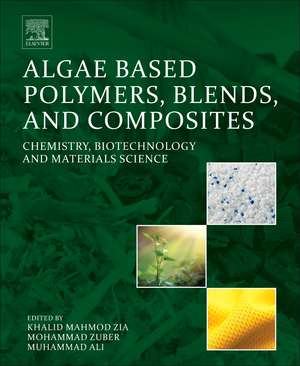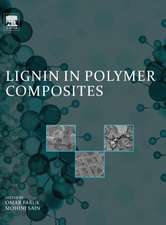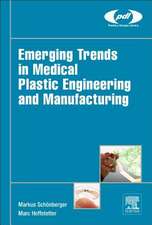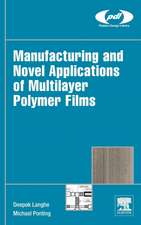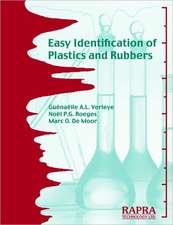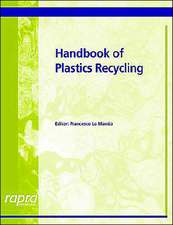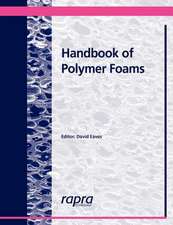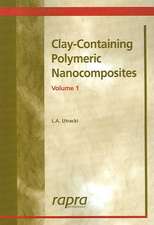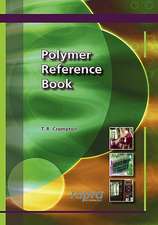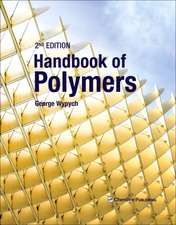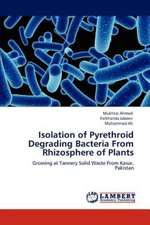Algae Based Polymers, Blends, and Composites: Chemistry, Biotechnology and Materials Science
Editat de Khalid Mahmood Zia, Mohammad Zuber, Muhammad Alien Limba Engleză Paperback – 20 iun 2017
The conversion of bio-mass into high value chemicals, energy, and materials has ample financial and ecological importance, particularly in the era of declining petroleum reserves and global warming. Algae are an important source of biomass since they flourish rapidly and can be cultivated almost everywhere. At present the majority of naturally produced algal biomass is an unused resource and normally is left to decompose. Similarly, the use of this enormous underexploited biomass is mainly limited to food consumption and as bio-fertilizer. However, there is an opportunity here for materials scientists to explore its potential as a feedstock for the production of sustainable materials.
- Provides detailed information on the extraction of useful compounds from algal biomass
- Highlights the development of a range of polymers, blends, and composites
- Includes coverage of characterization and processing techniques, enabling research scientists and engineers to apply the information to their own research and development
- Discusses potential applications and future prospects of algae-based biopolymers, giving the latest insight into the future of these sustainable materials
Preț: 929.21 lei
Preț vechi: 1377.31 lei
-33% Nou
Puncte Express: 1394
Preț estimativ în valută:
177.80€ • 186.14$ • 147.12£
177.80€ • 186.14$ • 147.12£
Carte tipărită la comandă
Livrare economică 29 martie-12 aprilie
Preluare comenzi: 021 569.72.76
Specificații
ISBN-13: 9780128123607
ISBN-10: 0128123605
Pagini: 738
Dimensiuni: 191 x 235 x 39 mm
Greutate: 1.47 kg
Editura: ELSEVIER SCIENCE
ISBN-10: 0128123605
Pagini: 738
Dimensiuni: 191 x 235 x 39 mm
Greutate: 1.47 kg
Editura: ELSEVIER SCIENCE
Cuprins
1. Bio-based Polymers and Materials: An overview
2. Synthetic materials and the problem they pose
3. Algae as a future feedstock for production of chemicals and energy
4. Origin of algae and their plastids
5. Algal Polysaccharides, Novel Applications and outlook
6. Biologically Active Compounds Extracted from Algae
7. Production and processing of marine algae
8. Algae biotechnology: A green light for engineered algae
9. A bio-refinery processing perspective for the production of polymers
10. Blends of algae with natural polymers
11. Algae based polyurethane blends and composites
12. Algae derived polyester blends and composites
13. Algae based polyolefins
14. Chlorella Based Composites
15. Algae blend with polyvinyl alcohol and Poly(N-Vinyl-2-Pyrrolidone)
16. Algae based polyether and poly (ethylene oxide)
17. Algae based hybrid nanocomposite materials
18. Characterization techniques for algae based materials
19. Processing techniques of algae based materials
20. Future prospects of algae based materials
2. Synthetic materials and the problem they pose
3. Algae as a future feedstock for production of chemicals and energy
4. Origin of algae and their plastids
5. Algal Polysaccharides, Novel Applications and outlook
6. Biologically Active Compounds Extracted from Algae
7. Production and processing of marine algae
8. Algae biotechnology: A green light for engineered algae
9. A bio-refinery processing perspective for the production of polymers
10. Blends of algae with natural polymers
11. Algae based polyurethane blends and composites
12. Algae derived polyester blends and composites
13. Algae based polyolefins
14. Chlorella Based Composites
15. Algae blend with polyvinyl alcohol and Poly(N-Vinyl-2-Pyrrolidone)
16. Algae based polyether and poly (ethylene oxide)
17. Algae based hybrid nanocomposite materials
18. Characterization techniques for algae based materials
19. Processing techniques of algae based materials
20. Future prospects of algae based materials
